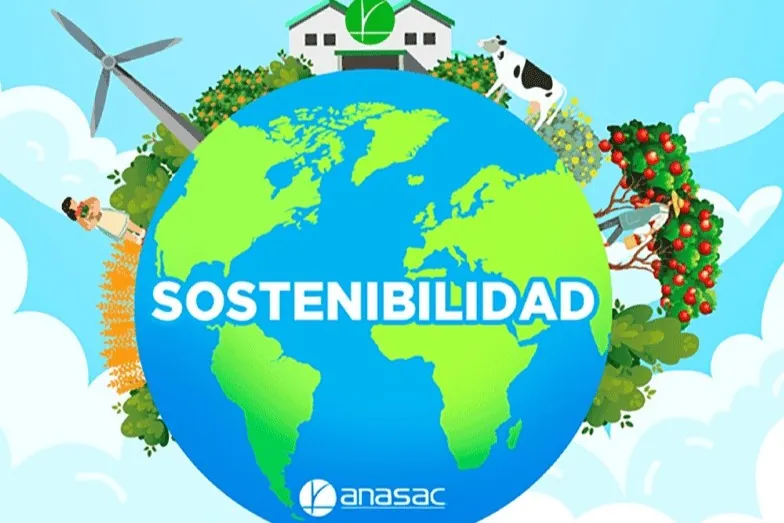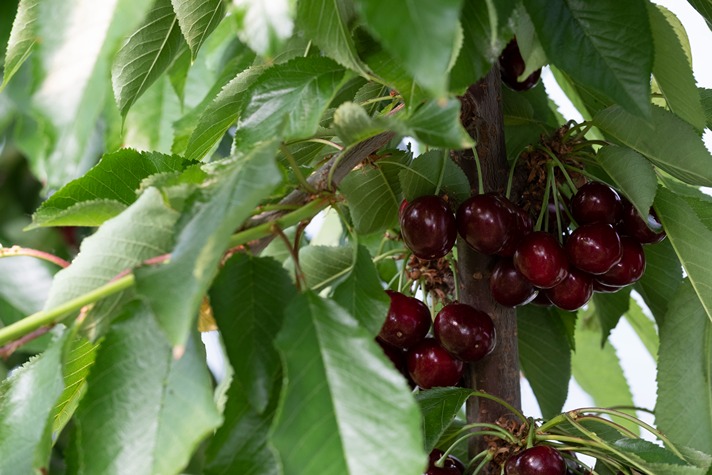In the third lesson of the Mundoagro Capacita course "Cherry Management and Physiology," Professor Walter Masman illustrated the various phenological events that occur at the tree level and described the knowledge as fundamental to understanding production and growth.
The flowering and fruit growth were the topics addressed in the third lesson of the course "Cherry Management and Physiology", promoted by Mundoagro Capacita and taught by Professor Walter Masman, a technical consultant specialized in cherries and stone fruits.
The session focused on floral induction and floral differentiation, understanding that the physiological change that occurs in a bud and conditions its evolution into a flower bud is called floral induction. The subsequent morphological differentiation that follows this change and leads to the appearance of the flower primordia is known as floral differentiation.
"The phenological events that occur at the tree level are various: post-induction, differentiation, bud swelling, flowering, development, growth curve, fruit set, ripening, harvest, and, between floral induction, floral differentiation and shoot growth; on the other hand, fruit growth and shoot growth. There are many events that go hand in hand with the induction and differentiation of flowers," said Masman.
"This normally occurs between the months of November and December, this is what has been confirmed in various studies, there are many documents that talk about it today and in particular in the case of cherries that detail it."
"For the southern hemisphere, of course, there can be differences between varieties, whose induction period is earlier and others that can be effectively delayed, undoubtedly also associated with the climatic conditions that can develop," added the professor.
In this sense, the consultant indicated that many producers already have in hand the bud analysis or are about to do so.
"And for those who do not have it, the invitation is literally to do it because I believe it is a very accurate, very graphic exercise to understand production, how my orchards rise or fall year after year and understand that an orchard ultimately has a positive stability in terms of induction or flower supply. There are various ways in which one can interpret how to achieve a certain stability from the point of view of flower primordia supply from year to year."
And it is precisely in this period that a very important process occurs, namely photosynthesis and nitrogen assimilation, which is very powerful in terms of the results of both induction and differentiation. Another important aspect of this development, related to management, has to do with the accumulation of sugars in the bud, which undoubtedly leads to better flower quality.
Flower Quality
The pollen requires temperatures above 5°C to germinate, but the ideal temperature is between 15 and 20°C. The pollen tube takes two to six days to reach the ovary, where again the ideal temperatures are between 15 and 22°C and the ovule is viable for five days at temperatures of 5°C and only for two days at temperatures above 20°C.
"An important aspect, also relevant this year, is the variability in pollen quality and the climatic effects, both in terms of chilling hours and degree days. Tests have shown that, being a year with lower chilling quality, the pollen germination rate also varies significantly. In other words, it seems that pollen quality can be strongly influenced by the quality of the chilling," added Masman.
The supply of bees and their quality is an important aspect for the safety of hives, so it is important that the beekeeper knows the characteristics of a good hive for its production. "Another alternative is bumblebees, which perform very well, often at lower temperatures. It is a good alternative in years when, for example, spring can play tricks," said the consultant.
To ensure fruit set, hormonal alternatives or hormonal inducers can be applied. "Even cytokinins and auxins, growth regulators, favor better fruit set, but the result varies depending on the phenological stage. There are also biostimulant products that induce the synthesis of some auxins endogenously that favor fruit set, as well as the application of ethylene inhibitors and nutritional supplements," added Masman.
Regarding the determination of color in cherries, early studies have shown that red color is dominant over yellow color and that the presence of a main active gene in homozygosity and heterozygosity is responsible for the red color in the skin and flesh of the fruit; yellow color is determined by the presence of recessive variants of the same gene.
This color variability is understandable as anthocyanins and carotenoids are metabolites produced as a result of the activity of complex biosynthetic pathways activated by many genes. In particular, it has been found that this trait is regulated by a MYB transcription factor, always associated with the red color of the flesh and skin of fruits, present in apples, pears, and all stone fruit families associated with gene cluster 3.
Twinguard, union of two powers
Elisa Cabrera, Key Account Manager at Corteva, also participated in this third session, presenting Twinguard, a broad-spectrum insect control formulated based on the active ingredients Jemvelva and Isoclast for the health management of hemipterans, thysanopterans, dipterans, and lepidopterans such as whiteflies, scales, California thrips, moths, and flies on nuts, pome fruits, stone fruits, and vines.
"This product also does not attract spiders because it is respectful of beneficial fauna, with wide tolerances and short withholding periods. And it mixes the union of two powers. We positioned this product focusing especially on fruit set, scale migrations, piglet migrations, that is, those moments that are the most susceptible," said Elisa Cabrera.
The cherry course is sponsored by MBL, Kimitec, Koppert, Corteva, and UPL.
Source: Mundoagro
Image: Mundoagro
Cherry Times - All rights reserved











